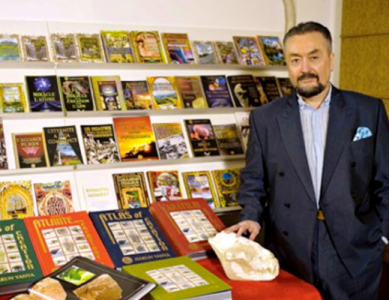Disclaimer: this post won’t be much about the technical aspect on how to do the digital detox – not necessarily none, but it will mostly contain (unimportant) non-technical aspect such as personal motivation and reflection which mostly opinions as well as hypothesis. What is your reflex after waking up from sleep? I am wondering how much people that will answer other than grab...





Sudah menuju hampir sebulan aku kembali ke rumah dan akan tinggal untuk jangka waktu yang lama. Setelah bekerja, nampaknya pulang ke rumah dan kampung halaman menjadi sebuah keistimewaan tersediri. Meskipun sebenarnya aku sudah merantau sudah sejak duduk di sekolah menengah pertama, namun pada masa ini banyak hal-hal yang aku rasa berbeda karena adanya financial independence. Misalnya, di waktu duduk di bangku sekolah, pulang...
Kala itu aku sedang berjalan menyusuri dinding horizontal yang dilihat manusia vertikal. Jam sudah menunjukkan pukul dua belas siang. Lapar rasanya. Ada satu nyamuk terbang dengan radius cukup dekat denganku. Aku berpikir, haruskah kumakan? Aku merasa kasihan. Hidup nyamuk sudah penuh tamparan manusia. Hap! Sudahlah kumakan saja ia sebab hari ini aku belum boleh mati. Kala itu aku sedang berjalan menyusuri dinding horizontal...
Good old time. I went to India for 10-days trip two years ago. And it has been one of the most adventurous journey I've had. I and two friends of mind visited Jaisalmer and experienced safari camp with only 20 bucks! ...
"Hobi kamu apa?""Passion kamu kira-kira apa?"Pertanyaan ini adalah salah pertanyaan yang menurutku terkategorikan sulit. Search engine di otak gagal untuk menemukan jawaban yang pas. Aku suka bermain gitar, tapi tidak segemar itu pula. Ada kalanya satu hari mempelajari chord-chord lagu, tapi tidak jarang juga satu bulan tanpa menyentuhnya sama sekali. Aku bekerja di bidang pembangunan sektor jasa keuangan dan pengentasan kemiskinan, tapi kedua...








Dengan segala hal yang terjadi di dalamnya, setahun silam aku memiliki kesempatan untuk melakukan refleksi dan mengenali diri. Rasanya cukup kompleks. Ada perasaan marah, sedih, bahagia, serta emosi-emosi lain yang belum ada penamaan. Namun, kali ini yang berbeda adalah caraku menyikapinya. Atas kapasitas ini, aku memiliki lebih banyak ruang gerak untuk berkaca, melihat permasalahan secara lebih mendalam. Tahun lalu, aku merasakan kegagalan yang...


Dua bulan terakhir, aku semakin sering menggulung laman Twitter. Mulai dari cuitan penuh makna sampai yang sampah pun kubaca. Suatu hari ada satu utas yang cukup menarik mata. Katanya, Deddy Corbuzier dan Young Lex membentuk sekutu pikiran bahwa Corona hanyalah konspirasi belaka. Perbincangan keduanya membahas soal virus yang sedang hype ini disiarkan di kanal Youtube milik pesulap kondang yang punya 8,7 juta pelanggan....




A couple days ago, at the celebration of International Women’s Day in my office, I was asking a few women colleagues with a question, “when did you realize at the very first time that you encounter inequality or discrimination issue(s) because you are a woman?” Not surprising the answer shows that as a woman we got unequal opportunity that often because of gender,...
Tadi malam sepulang dari kantor, keponakan (Amanina) menyambutku dengan gembira dan langsung mengajakku bermain lilin di kamar. Amanina sedang sangat menyukai lilin entah mengapa. Kebetulan akhir pekan lalu, aku membeli dua buah lilin aromaterapi di IKEA dan kutunjukkan pada Amanina. Kata kakakku (bapak Amanina) ternyata dia sudah menunggu-nunggu kehadiranku karena ingin sekali menyalankan lilin yang kubeli hari Minggu lalu. Hampir satu jam, kami...
Setelah melewati perkuliahan selama 3 tahun 8 bulan 14 hari beserta 6 bulan masa cuti, akhirnya saya sudah berhak mendapatkan gelar sarjana dan telah diresmikan kesarjanaannya melalui wisuda pada satu bulan silam. Sebagai selebrasi atas diri saya sendiri, saya ingin menuliskan cerita pendek semasa kuliah sarjana kira-kira empat seri. Pertama, cerita kenapa masuk kampus UGM dan jurusan ilmu ekonomi yang akan disertai cerita...
I had just stumbled upon the old videos that I took during my stay in Austria, then decided to edit (basically just to compile) the videos. Today I successfully compiled videos that I took during a day trip to Hallstatt. The village that located in Salzkammergut region is honestly really incredible for me. I am one kind of people who seek calmness and...
*tulisan diketik dalam Bahasa Indonesia untuk mengembalikan kemampuan menulis Bahasa Indonesia* Ada satu hal yang menjadi salah satu tantangan terbesar dalam hidupku dan mungkin juga banyak orang lainnya, yakni konsistensi. Bagiku, memulai sesuatu yang baru jauh lebih mudah dibandingkan dengan melakukan sesuatu yang sama pada periode waktu yang lama. Hal inipun terjadi ketika aku berjanji pada diri sendiri untuk menulis blog paling tidak...
This weekend, I went eating out to a restaurant, called Gelbes Krokodil. Here was the restaurant where I tried my very first Wiener-Schnitzel, one of typical foods in Austria. And I love it! The bread crumps tasted really great in my mouth. It was crunchy and delicious. My friend tried the semmelknodel, but I couldn't taste it well because there are pork in it....





